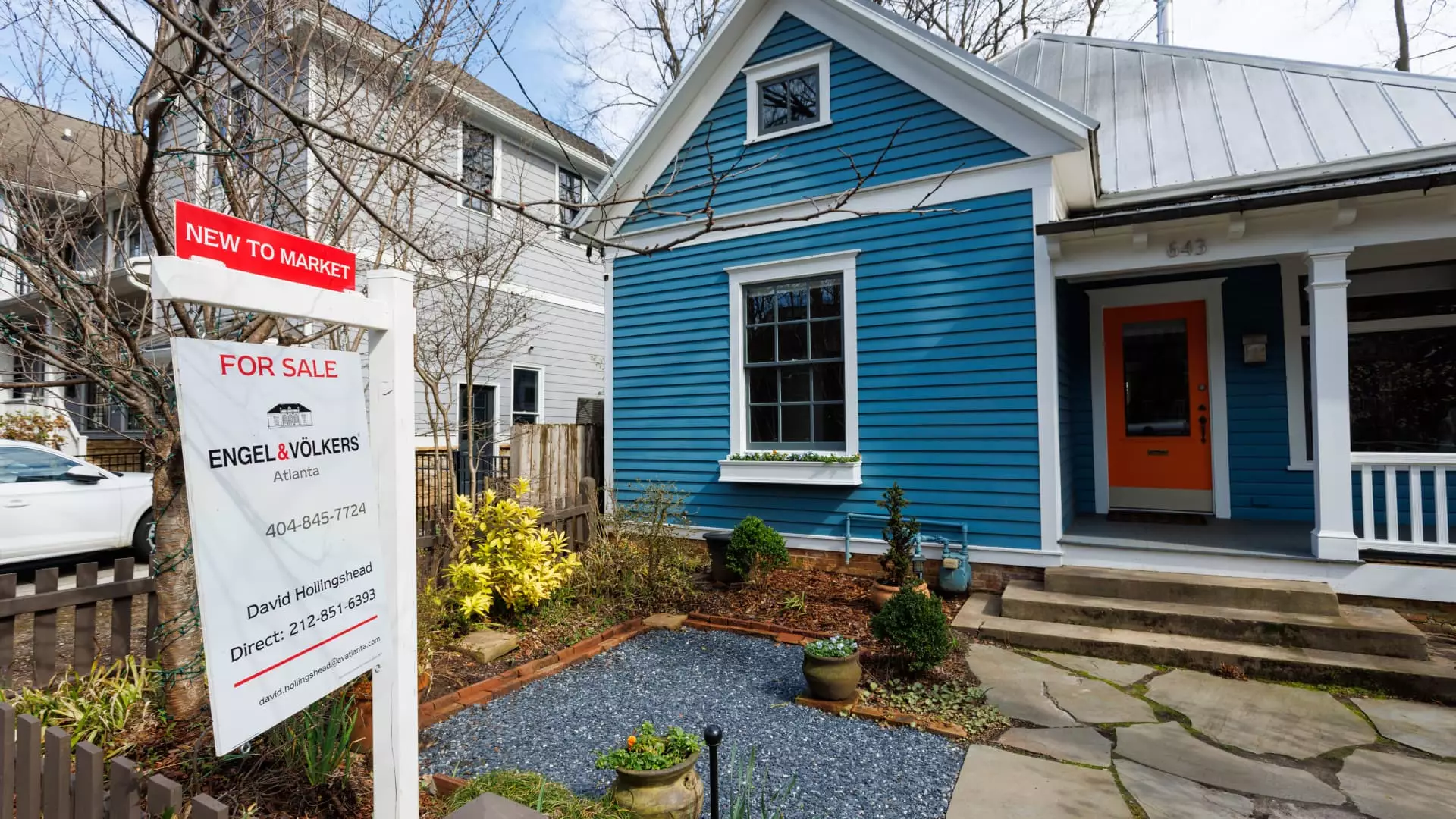February’s report of a 4.2% increase in previously owned home sales emerges as a surprising twist in what many anticipated would be a market downturn. Analysts voiced expectations of a 3% decline, only to be met with a reality that challenges conventional forecasting methods. It’s critical to decode this anomaly because while a rise in sales sounds positive, it merely masks deeper issues that plague the housing market. With inventory still tight and mortgage rates fluctuating, particularly hovering around the notable high of 7% for a 30-year fixed mortgage in the preceding months, we must question whether this uptick genuinely signals recovery or simply a mirage in a desert of buyer hesitation.
An Illusion of Stability
The fact that sales figures were actually 1.2% lower than those of a year ago should raise eyebrows. Home purchases are often retrospective counts, meaning they reflect decisions made in a volatile environment where rates were peaking. As Lawrence Yun, chief economist at the National Association of Realtors, pointed out, “Home buyers are slowly entering the market.” This characterization encapsulates a cautious approach rather than enthusiastic engagement. This cautiously optimistic phrasing undermines the reality: potential buyers remain wary, negotiating their pathways through financial uncertainties and high property prices.
The Influence of Inventory
Examining inventory brings another layer of complexity. Although the report claims a 17% year-over-year increase in available units ending February at 1.24 million, a supply of just 3.5 months indicates we are still in a severe seller’s market. A balanced market traditionally hovers around a six-month supply, and current conditions force buyers into precarious situations where bidding wars drive prices even higher. This imbalance not only harms affordability but also weighs disproportionately on prospective first-time homebuyers, who are already feeling the squeeze.
The First-Time Buyer Dilemma
It is somewhat disheartening that while first-time buyers accounted for 31% of February’s sales—an improvement from 26% a year prior—the notion that this demographic is overwhelmingly diving into the fray is misleading. Increased first-time buyer activity, though seemingly encouraging, becomes an alarming reflection of the less favorable economic situation; this group is now more motivated to purchase despite high prices, perhaps out of fear that waiting could further escalate costs. This trend is juxtaposed against the growing retreat of investors, whose market pullback is telling of a broader lack of confidence in home values.
A Deeper Dive into Market Dynamics
The irony is further compounded by the fact that all-cash sales accounted for 32% of transactions, a slight decrease from 33% the previous year. This statistic illustrates a shift towards owner-occupants who are leveraging capital. While cash transactions indicate liquidity, their prevalence amid investor pullbacks reveals latent fears over escalating mortgage costs, amplifying the cycle of market volatility. To further explore this contradiction, a separate survey conducted by John Burns Research and Consulting showed that many real estate agents report we are experiencing a markedly weaker resale market this spring. With over half indicating that sales are below normal, this opens discussions about the sustainability of February’s figures.
The 4.2% jump, sensationalized in headlines, encapsulates a narrative of cautious optimism, yet the underlying market dynamics tell a more convoluted story of uncertainties and systemic challenges that continue to burden potential homebuyers.

Leave a Reply